Search Images
Browse Content (p. 1362)
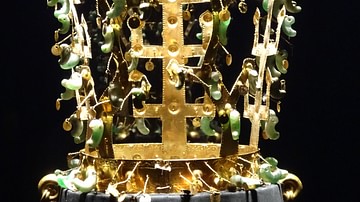
Image
Gold Silla Crown
A gold crown of the Silla kingdom, Korea. From the Great Tomb at Hwangnam, Geumseong (Gyeongju), 5-6th century CE. The crown is made of sheet-gold and decorated with granulation and crescent-shaped jade pendants. The tree-like upright parts...
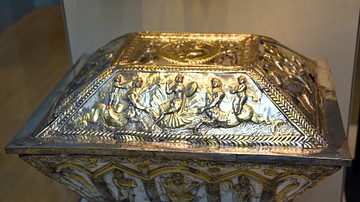
Image
The Projecta Casket
This casket, inscribed "Secundus and Projecta, live in Christ" in Latin was probably a wedding gift to the couple shown on the top. On the front, the bride adorns herself, while handmaids bring a casket of cosmetics. The lid shows a similar...
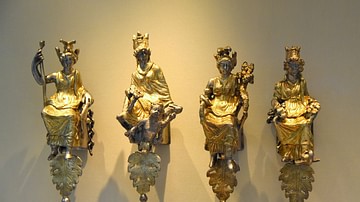
Image
Tyche Furniture Ornaments
These ornaments show female figures (Tyches) representing the 4 leading cities of of the Late Roman World. "Rome" is dressed in military costume. "Constantinople" holds a cornucopia (a horn filled with flowers and food), representing fruitful...
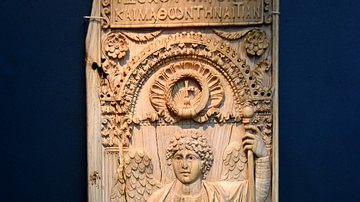
Image
Byzantine Ivory Diptych Panel
This is one of the largest surviving ivories from the Byzantine Empire. It comes from a hinged 2-leaf diptych, possibly used as a writing table. It shows an archangel holding an orb and sceptre. The style of his drapery is classical, but...
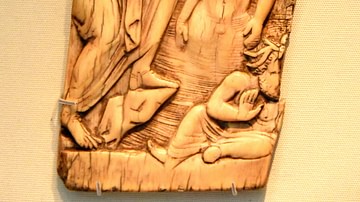
Image
Byzantine Ivory Panel Depicting the Baptisim
A figure of the young Christ stands full-face up to the waist in water. To the left, St. John, the Baptist, stands and leans forward upon a rock. One of his hands rests upon Christ's head. At the upper part of the panel, the hand of God appears...

Image
Relief from the Interior of the Funerary Chapel of a Meroe Queen
From early 3rh century BCE until the 4th century CE the majority of Meroitic rulers were buried beneath pyramids close to the city of Meroe. On several occasions the kingdom was ruled by queen whose title was Kandake. A distorted reference...
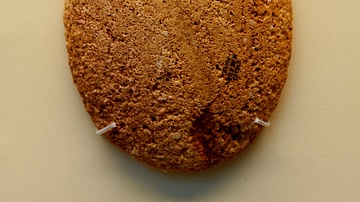
Image
Grinding Stone from Nabta Playa
Seeds and wild grasses were processed with round or oval grinders (manos) of hard quartzitic sandstone. These were rubbed against a larger mill stone to make flour. A depression in the lower stone's surface prevented spillage. The abundance...
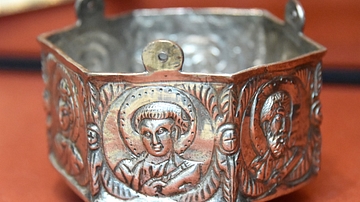
Image
Hexagonal Censer from the Cyprus Treasure
Censers were used for burning incense, which was a popular religious rite in eastern Christian churches. This one would have been suspended on chains, threaded through the holes in the plaques attached to the rim. Each side is decorated with...

Image
Wall-painting of Martyred Saints from Wadi Sarga
Three separate elements were painted upon the wall of a structure near the monastic complex of Wadi Sarga. The central scene, executed in red outline, depicts the saints Ananias, Azarias, and Misael, known as the "three children in the furnace"...
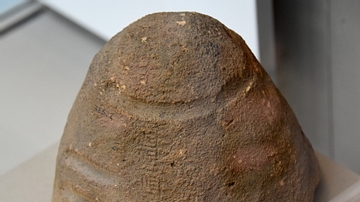
Image
Jar Sealing of Narmer
The name Narmer, written as a catfish within a serekh (royal name box), has been impressed with a large cylinder seal several times onto this conical jar lid. The chisel, the second element of Narmer's name and perhaps originally a title...